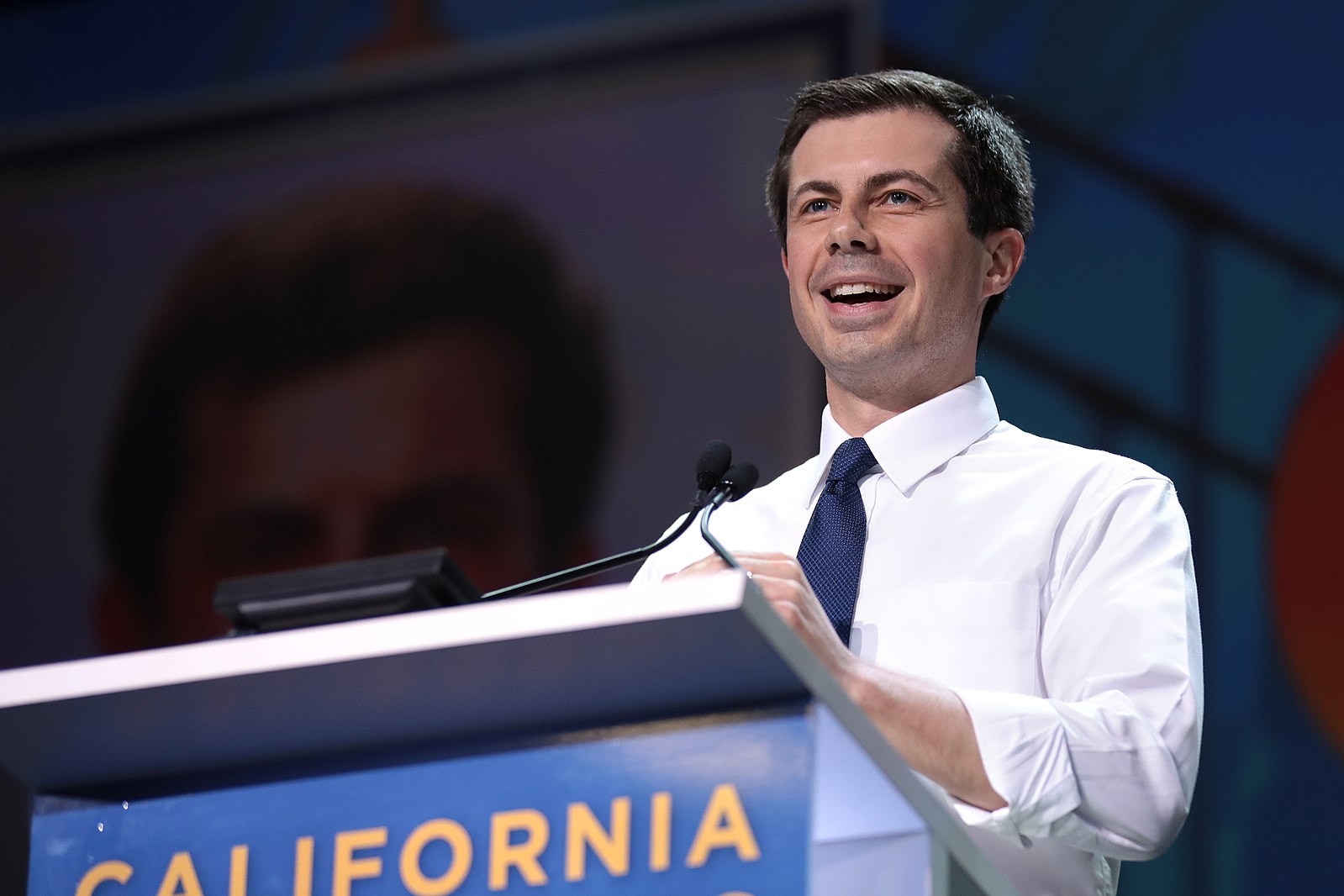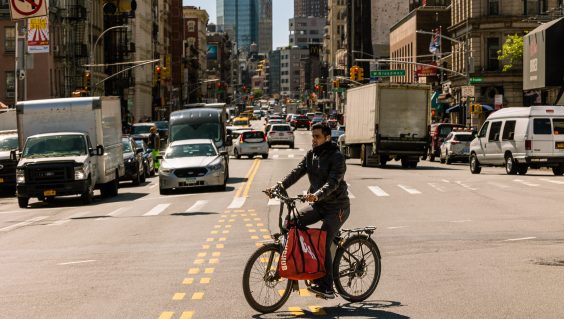When Road Diets Get Rolled Back, Part I: The Texas Road Diet Massacre
12:01 AM EST on February 23, 2022
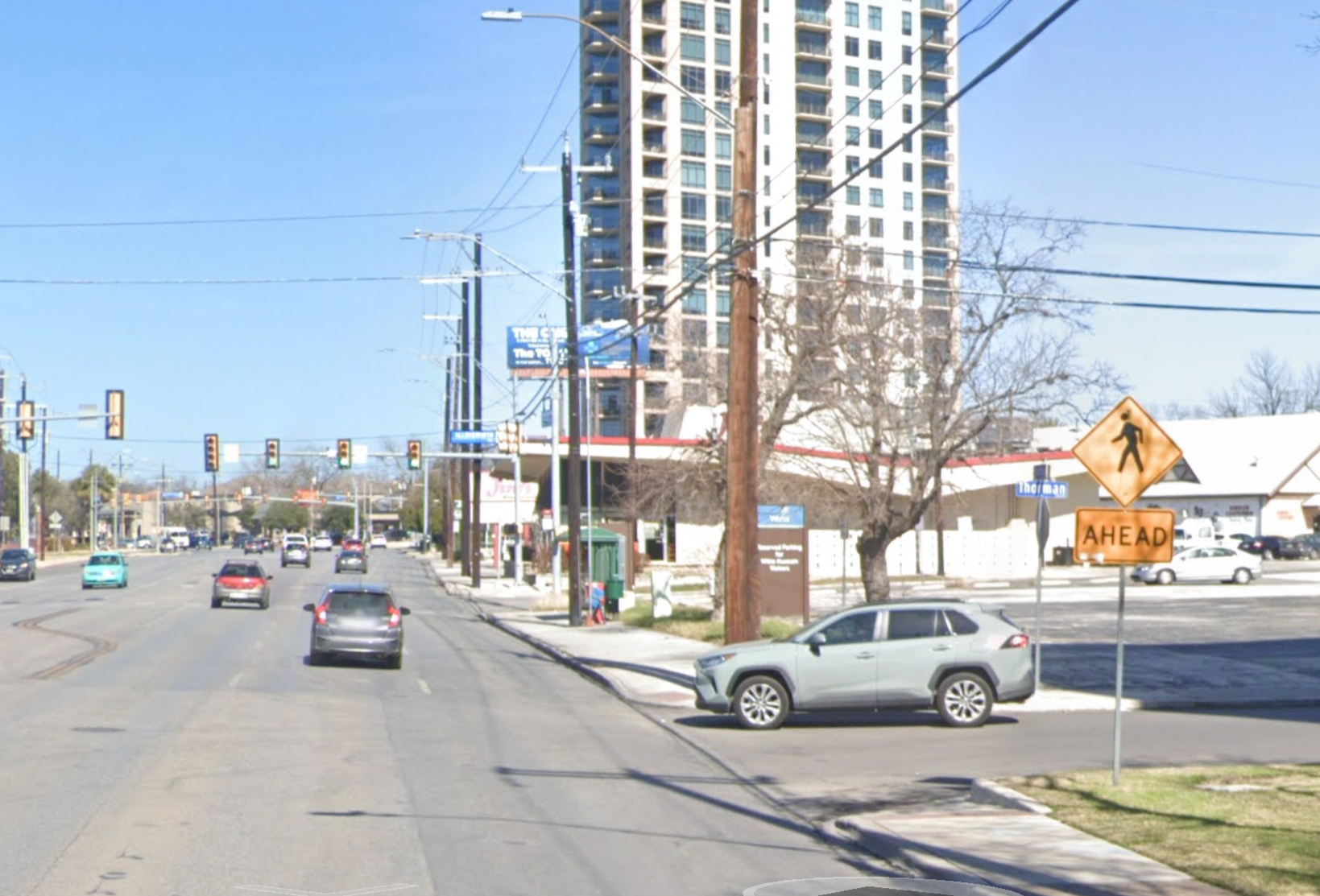
About half the width of San Antonio’s Broadway Avenue. Via Google Maps.
Editor's note: today, we're launching a brief series on communities that have rolled back their efforts to transform dangerous, auto-centric roads to center the needs of people on all modes, and what makes road "diets" so challenging in U.S. cities and towns. Today, we're looking at one city that's facing resistance from the top down; next, we'll look at another whose challenges are coming from the bottom up. And then we'll take a broader look at what strategies and reforms might help make similar projects successful in the future.
How can a city calm its most dangerous roads when those roads are owned by the state?
That's the question advocates in San Antonio are wrestling with on the city's notorious Broadway Avenue — though until recently, many thought the battle was won.
On Jan. 27, the Texas Transportation Commission made the shocking announcement that it would invalidate a 2015 decision to grant ownership of a 2.8-mile stretch of Broadway to city authorities — in the process, halting an overwhelmingly popular plan to reduce the thoroughfare from seven lanes to four while expanding sidewalks, adding protected bike lanes, and cultivating street trees.
The segment takes residents directly to the edge of San Antonio's highway-ringed downtown, and locals say it's long functioned as one of the city's main streets, and has become even more crucial to the region in the seven years since the supposed ownership change was announced.
The state now claims that authorization was never officially approved — and that a road diet would run counter to Gov. Greg Abbott's campaign promise to ease congestion statewide, despite decades of evidence that keeping roads wide only encourages drivers to keep clogging them. San Antonio leaders say that traffic studies of the Broadway projected minor driving delays — but the Texas Department of Transportation says making motorists wait even a little would violate the state's Clear Lanes Initiative, which aims to end gridlock.
"Essentially, congestion along the corridor would dramatically increase as traffic lanes are eliminated, increasing delays for motorists and forcing traffic onto other roadways and into neighborhoods," agency spokesman Adam Hammons told Streetsblog. "TxDOT has made a commitment to the people of Texas to reduce congestion on state roadways, and we owe it to them to make sure TxDOT projects and the use of state property are consistent with that policy."

San Antonio City Manager Erik Walsh called the decision "a complete about-face" from an agency that had seemingly supported the "lower Broadway road diet" from the start — not to mention an agency that essentially begged the city to take control of the road in the first place.
Under the infamous "Texas Turnback" program in 2014 and 2015, the DOT asked cities across the state to volunteer to assume the maintenance obligations of more than 1,800 miles of non-controlled access highways, as part of a broader attempt to address a $5-billion annual budget shortfall. Advocates say that shortfall was caused largely by decades of overbuilding Texas's road network to center the needs of drivers, which leaders undertook without a solid plan to pay for all the asphalt; the Lone Star State's gas tax is the 44th lowest in the nation.
With TxDOT's ostensible blessing, San Antonio has sunk more than $3 million into planning the Lower Broadway project, and in 2017, an overwhelming 70 percent of voters approved a $42-million funding measure. Private businesses have sunk millions more into new development along the route with the understanding that the 35 mile-per-hour car sewer would soon be transformed into a grand boulevard. Parts of the project closest to downtown have already broken ground.
"This is simple: allow Broadway to prosper," wrote a coalition of San Antonio civic and business leaders in a letter to the Commission. "This is a small price to pay for the increased safety, job and business creation, the expected billions of dollars of new development, and the resulting increases in much-needed sales and property tax revenues."
State authority, local harm
Whether Broadway is allowed to prosper or not, though, is ultimately up to the state — just like on high-speed, state-owned roads throughout America.
In a 2021 analysis of the most dangerous non-interstate roads for pedestrians in the U.S., researchers found that the vast majority were located on current or former state highways. And most of them shared dangerous characteristics with Broadway: almost all were at least five lanes, had speed limits of 30 miles per hour or more, and were flanked by businesses, schools, homes, and transit stops.
Like many of the state DOTs throughout the U.S. that built roads like Broadway throughout their communities, TxDOT is generally described by advocates an agency whose primary goal is increasing driver speeds, even when thoroughfares run through neighborhoods where people walk and roll.
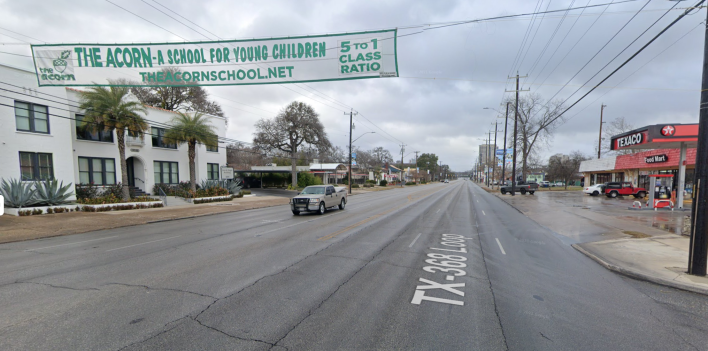
Some Texas transportation professionals say that despite Broadway's safety shortcomings, the state has a right to stop the city from fixing them if doing so would set back the agency's other goals.
"It’s perfectly correct for TxDot to say we need to review performance measures to confirm the context of the current roadway," said Michael Morris, director of transportation for the North Central Texas Council of Governments. "Our [state-owned] roadways were really designed for commuter-type purposes. In order [for cities] to take ownership, you need to prove that purpose has changed."
Advocates say, though, that Lower Broadway has always been populated by pedestrians — and there's no better evidence than the car crashes that routinely happen along it. The segment that was targeted for the road diet was the site of at least two serious injury crashes in the last few years.
That actually isn't enough to rank the road on the city's High Injury Network for pedestrians. But advocates point out that lower Broadway still shares many dangerous design characteristics with the one percent of city roadways where 42 percent of San Antonio's severe collisions involving a walker do occur, many of which are also under state control.
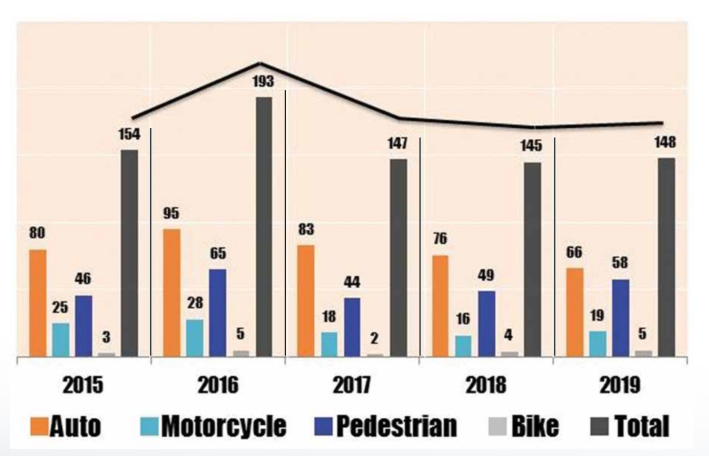
"An agency's budget tells you where their priorities are," said Kevin Shepherd, founder of the Dallas-based transportation consulting firm Verdunity. "If an agency's budget is investing real dollars towards pedestrian and cyclist networks and public transit, then you know it's a priority for them. In TxDOT's case, it's all about moving cars, moving vehicles."
Big Politics vs. Public Benefit
Before the Broadway reversal, though, TxDOT had another big priority: getting the road off its maintenance rolls. And the reasons why it has turned its back on the Texas Turnback has some advocates questioning whether the agency was ever serious about reckoning with the costs of its overbuilt highway system at all.
"[The Texas Turnback] was really the first time I'd seen anybody at the state level talking about the long-term fiscal obligations of the road systems in Texas," said Shepherd. "But it turned out to be a pretty shallow conversation, at best."
Shepherd says that many Texas communities did hold onto control of roads granted under the program, and that some even completed ambitious, human-centered redesigns — significantly increasing local tax revenues in the process, and ensuring that municipalities could actually afford to keep their new road assets in a state of good repair.
Those small wins, though, were quickly eclipsed when the agency walked back some of the Turnback's most forward-thinking promises, including abandoning a plan to revert more than 80 miles of crumbling highways to gravel. Soon thereafter, TxDOT requested $400 million from the state highway fund to plug the gap for that fiscal year alone.
Shepherd says the Broadway reversal is even more evidence that the state never really intended to get its transportation books in order, especially when powerful political figures intervene with their own priorities. Like many Texas advocates, he suspects that Gov. Abbott spurred TxDOT to take back Broadway, citing a similar road diet in Austin that he opposed on grounds that it would increase congestion; some think the real reason has more to do with partisan bickering between Abbott, who is a Republican, and Texas mayors, who tend to be Democrats.
Abbott has publicly referred to Broadway as "State Loop 368," erasing locals' preferred name for the downtown road.
Wonder why Austin roads are more congested? Because of policies like this that reduce car lanes. #ATXtraffic https://t.co/I5DFoIgVPS
— Greg Abbott (@GregAbbott_TX) December 6, 2017
"It's purely politics," added Shepherd. "'The war on cities' is a phrase that everybody's using lately... There's just this increasing tension between cities wanting to build more walkable destination and states who don't. [Cities] see the benefits of walkable places."
Urban leaders, though, aren't the only ones who want to give their residents access to safe, human-centered places — and when state leaders paint road diets as a big-city liberal boondoggle, they're letting down lots of small-town Texans, too.
"That very simple dialogue of 'We're for the auto-focused approach to growth, we're for the suburbs, urban environments equals democrats and that's the other side' — it's very frustrating," added Shepherd. "These complicated discussions are being boiled down by politicians into dense cities vs. everybody else. And the fiscal sustainability of [human-centered roads] — that part of the conversation is nowhere to be found."
Shepherd is hopeful that if state agencies like TxDOT and leaders like Abbott are shown the fiscal benefits of road diets, they can be won over — because safety arguments aren't moving the needle. And if that happens, safety benefits will naturally follow.
"This was exactly the kind of project that we need more cities doing around the country," added Shepherd. "Sure, is it going to create more congestion? Absolutely. But that's what makes it more safe for pedestrians."
Kea Wilson is editor of Streetsblog USA. She has more than a dozen years experience as a writer telling emotional, urgent and actionable stories that motivate average Americans to get involved in making their cities better places. She is also a novelist, cyclist, and affordable housing advocate. She previously worked at Strong Towns, and currently lives in St. Louis, MO. Kea can be reached at kea@streetsblog.org or on Twitter @streetsblogkea. Please reach out to her with tips and submissions.
Read More:
Stay in touch
Sign up for our free newsletter
More from Streetsblog USA
Four Things to Know About the Historic Automatic Emergency Braking Rule
The new automatic emergency braking rule is an important step forward for road safety — but don't expect it to save many lives on its own.
Who’s to Blame for Tuesday’s Headlines?
Are the people in this photo inherently "vulnerable", or is this car just dangerous?
Why Riders With Disabilities Have To Sue For Accessible Transit Stops
A Bay Area transit agency is only the latest to be sued over inaccessible stations. What will it take to get every American stop ADA compliant?
Monday’s Headlines Reconnect With Pete
More than $3 billion is flowing out of the White House to help correct infrastructure mistakes in Black communities.
‘Buy, Bully, Bamboozle’: Report Shows App Companies Threaten Democracy
App delivery companies seek to block worker-led improvements by spending big money on political influence, leveraging their data, and even co-opting progressive language, argues a new report that lands days before a national one-day strike by app-workers.



